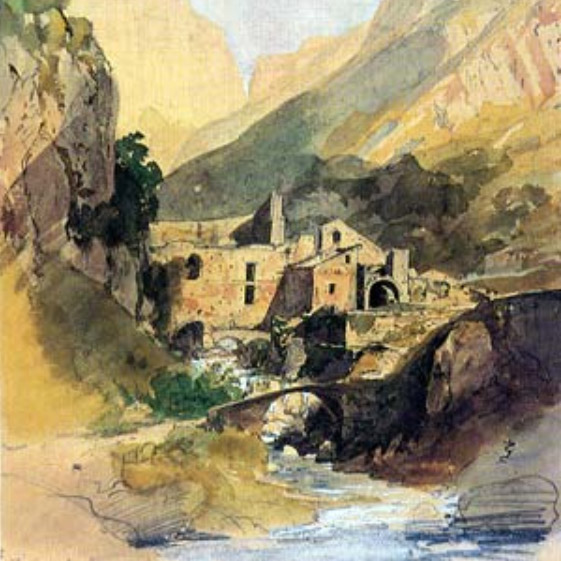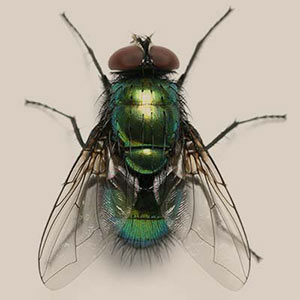
The Ferriere Valley, Scala's most precious jewel, is one of the 41 Italian biogenetic reserves. A deep valley, primitive and lush, that begins in the mountains of Scala and ends six kilometres further downin the territory of Amalfi. A piece of nature that comes from the past, perhaps because it is hidden and difficult to visit, has been passed down to us almost intact.
For the inhabitants of the rugged coastal mountains, water has historically represented a precious ally to be used with ingenuity: the Canneto, in addition to irrigating the crops, provided the energy for the preindustrial factories developed in the Valley during the Middle Ages. The upper part which falls within the territory of Scala, due to the presence of ironworks, is said Ferriere Valley. The lower part near Amalfi, due to the presence of ancient paper mills also run by water, is called the Valley of Mills.

The ruins of the ironworks in a watercolour by Thomas Ender. Constructed at the beginning of the fourteenth century, it transformed the raw iron imported from the island of Elba. The ironworks also benefited from the efficient port of Amalfi and were not subject to the state monopoly of iron. In the mid-eighteenth century, now out of business, they stopped functioning. The valley was thus restored to nature. It's ambience, primitive and fairytale-liked, enchanted the great romantic travelers of thenineteenth century.
High rocky ridges protect the valley from cold northerly winds. From the south, on the other hand, it is exposed to the warm and humid winds from the sea. This particular climatic condition involves the phenomenon of vegetation inversion: whereby the vegetation on the bottom of the valley is mesophilic, i.e. it grows in a fresh and humid environment, whereas the Mediterranean scrub, which prefers a warmer and drier environment, grows on the higher walls.
In the heart of the protected area of the valley floor is the majestic fossilised moss wall. Like a huge sponge saturated in water, the wall drips continuously along its entire surface. The water, dripping constantly along the hanging moss, has caused the accumulation of calcium bicarbonate, petrifying them in a solid structure of living stalactites.
The Valley has preserved unchanged over time its very rare subtropical microclimate typical of countries with heavy rainfall such as in Southeast Asia. Plant species from very distant times constitute the ideal habitat for a rich ecosystem of inestimable scientific and naturalistic value.
Woodwardia radicans
Among the rare plants present in the valley, the Woodwardia is undoubtedly the most important. Discovered in 1710 by the botanist Micheli, it is considered a living fossil. The large fern has fronds that can reach up to 3 meters in length.
Pteris vittata
An ancient fern but of great relevance. Recent scientific studies have revealed its exceptional ability to absorb poison: up to 200 times that of soil. It even seems that arsenic is favourable for its growth.
Pteris cretica
A rare and elegant fern, lover of warm and humid environments. It survived the environmental changes that occurred with the ice age. Like the other ferns, it has long hidden the secret of its reproduction: only in the nineteenth century were the spores discovered beneath the leaves.
Erica terminalis
A species typical of wet and sub-mountainous areas. It is considered a kind of relic of the subtropical mountain vegetation of the middle Tertiary.
Pinguicula hirtiflora
The Valley is also home to a precious carnivorous plant. When the delicate rose petals unfold, the leaves secrete a sticky liquid: containing enzymes to capture and digest insects.

The Italian stream frog is one of the major attractions for children visiting the valley. The species is found only in Italian territory, it is not possible to find it anywhere else in the world. Like all amphibians, it is active only in the warm months of the year, going into hibernation from November to February and burrowing undergroundor muddying itself at the bottom of puddles.